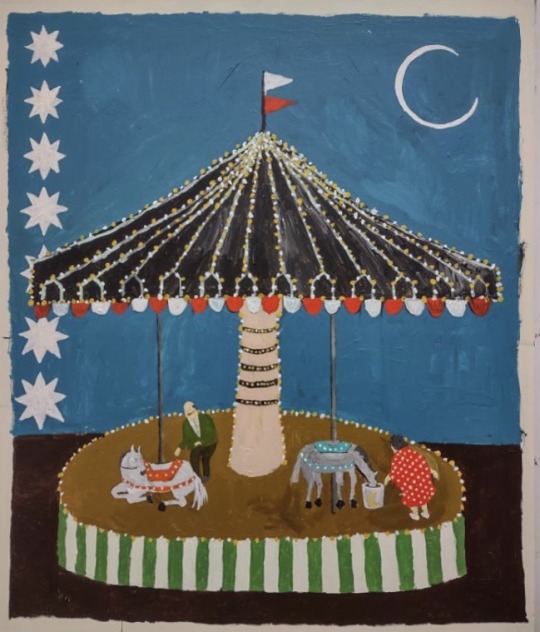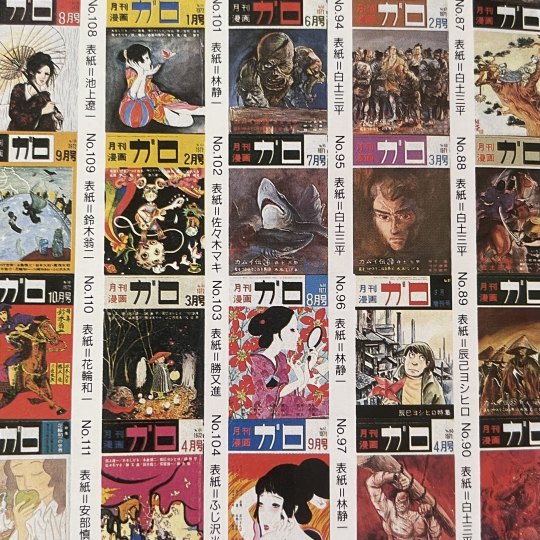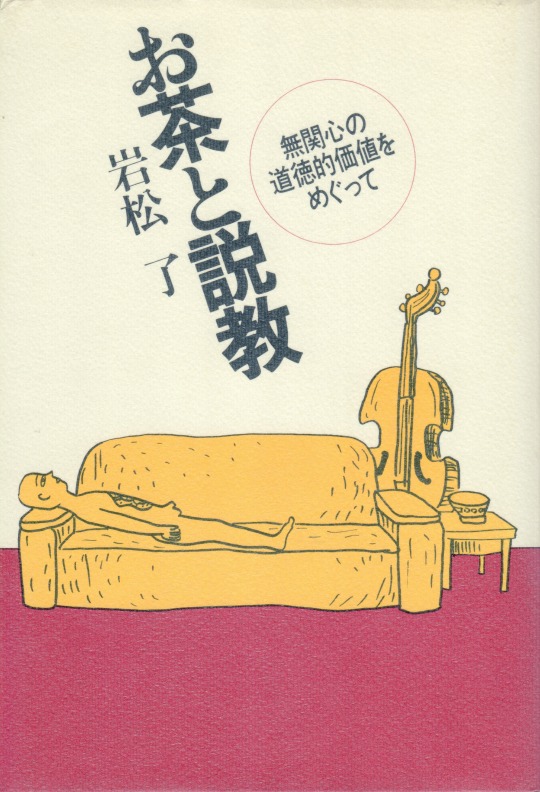#Ebisu Yoshikazu
Explore tagged Tumblr posts
Text

The staff at the pachinko parlor, in a panel from Ebisu Yoshikazu's comic "Fuck Off," which appears in the 1981 collection The Pits of Hell (available from Breakdown Press).
#Ebisu Yoshikazu#The Pits of Hell#1981#Breakdown Press#Ryan Holmberg#Seirindo#Garo#復活版 地獄に堕ちた教師ども#蛭子能収#Fuck Off#1975: A brave and beautiful family in recessionary and sickly Japan#Yoshikazu Ebisu
9 notes
·
View notes
Text















Breakdown Press – New and Restock in at Copacetic
The long awaited return of Margot Ferrick is impressively embodied in her new pair of works, Half Gold / Half Dung and Star of Swan. And then there's the (very) limited edition of DOGBO by the one and only Jon Chandler. Plus: Restocks of Ebisu's The Pits of Hell and Baby Boom by Yokoyama! All from Breakdown Press at Copacetic.
1 note
·
View note
Text

2
#edward gorey#takeshi kitano#werner herzog#fujiko f fujio#philip guston#mike leigh#park hoon-jung#jan svankmajer#henry taylor#goya#kawanabe kyosai#wallace berman#Tagawa suiho#yoshikazu ebisu#takashi nemoto#de palma#the naked cult of hickey
4 notes
·
View notes
Video
youtube
💥 What We Mean by Yesterday by Benjamin Marra, published by @fantagraphi...
0 notes
Video
youtube
Here’s Why You Should Go Manga Hunting in Japan
0 notes
Photo
蛭子能収
Yoshikazu Ebisu

Yoshikazu Ebisu 蛭子能収
26 notes
·
View notes
Text
My Journey with Garo

Extract of Garo issue cover art from the Garo Mandala (1991)
It must've been near the end of 2022 when I discovered the treasure trove that is the Monthly Manga Garo, a legendary alternative manga magazine that ran from 1964 to 2002 that thrived against the backdrop of a politically turbulent post-war Japan. In the English market now, we're fortunate enough to be getting a wide variety of translated works from some of the manga greats who had serialised in Garo. From pillars like Tsuge Yoshiharu and Shirato Sanpei to the heta-uma king Ebisu Yoshikazu, you won't ever be bored with the sheer variety of stories, art styles and subject matter that can be seen throughout Garo's lifetime. Pick up any issue and you'll be surprised as to how many types of stories will grace your eyes.
Now back to my personal experience with Garo. I had seen a Garo issue for the very first time through one of Shawn's videos from Japan Book Hunter, a manga plug that I've used for amazing and rare manga that you won't be able to find anywhere except in Japan's jungle of bookstores. His YouTube channel at the time was uploading extremely interesting manga hauls that touched upon a wide variety of lesser-known genres and niches in Japanese comics. There were alternative manga, Shoujo horror, SF, gag and all the other gritty stuff from the wider world of manga outside the usual Shounen Jump. I watched his channel religiously and still look back on some videos to this day, reflecting on how far I've come in learning about manga and manga history. Huge shoutout to Shawn and his store, check him out!
After moving away from the more well-known Seinen and Shounen titles in search of more to explore, my foray into alternative and underground manga was one of the most enlightening experiences in my reading journey. I'd equate my discovery of Garo to my first reads of Borge's short stories, both mind-blowing experiences that have completely transformed my tastes in fiction forever. Garo and my subsequent dives into other alternative manga have now created an insatiable curiosity into what else could be hidden out there in the largely untranslated world of manga. It seems like going backwards in time is the direction I'm taking, but I haven't even scraped the tip of the iceberg yet with Garo, let alone other niches like Shoujo horror and Kashihon. Slowly I'm completing issue after issue, gradually exposing myself to a legendary group of mangaka and artists that have cemented themselves in a magazine that I feel stands the test of time.
At this moment, I have about 40-ish Garo issues on my shelves, and I've read maybe 15 of those. It's a slow reading process, but it's insanely worth it. Each decade is vastly different from the others, so it's extremely fascinating to see the evolution of the magazine over time. For example, starting off in the 60s you have the legendary Kamui-den by Shirato Sanpei, a ninja tale set in feudal Japan that involves social/political commentary on topics like class conflict and oppression. The series was responsible for the birth of Garo because founder Katsuichi Nagai, who I believe was already experienced in the kashihon market, had wanted to give a platform for Shirato to serialize his work. Many stories in the 60s era of Garo were more politically expressive, coinciding with a lot of the unstable politics at the time in Japan. Other mangaka largely present throughout 60s Garo include Mizuki Shigeru, Tsuge Yoshiharu, Nagashima Shinji, Takita Yuu, Tsurita Kuniko and many more.

Various Garo issues from my bookshelf
Then, you move into the 70s. This is where mangaka and artists like Hayashi Seiichi, Tsuge Tadao, Susumu Katsuma and Abe Shinichi start to become more present in the spotlight and appear more frequently in issues. A more surreal and weirder style of stories begin to appear in this decade, marking a key period for Gekiga in my opinion. Personally, when I think Gekiga, my mind goes to people like Hayashi, Tatsumi, Tsuge and Abe, so it's a time that I feel was a very important one for Garo.

Flowering Harbour - Hayashi Seiichi (Garo 1969 May)
The majority of my Garo reads have been towards the tail end of the 60s, with some reads spread throughout the 70s and 90s. Funnily enough, I don't think I have many issues from the 80s. From what I've read from the later decades of Garo though, I've fallen deeply in love. Going from the Tsuges, Hayashis and Mizukis to a whole new world of more contemporary mangaka like Usamaru Furuya, Kawai Katsuo and Maruo Suehiro opened up an even bigger obsession for the magazine. You have an influx of ero-guro (erotic-grotesque) and heta-uma (bad-good) in the scene that introduced a great deal of new names, a lot of whom had also continued into Ax magazine, the spiritual successor to Garo, after the magazine's end. I can make a whole other post on Ax, but that's for another day.

My Youth - Maruo Suehiro (Garo 1983 August)
That about sums up my journey reading Garo from discovery to this current point in time. With 426 issues spanning from the 60s to the early 2000s, I'm not going to run out of issues to read anytime soon. Maybe in a future post, I'll talk more in-depth about specific mangaka and artists that I enjoy. But anyways, thanks for reading my first blog post if you've come this far! Hoping to get out more posts in the future because it really scratches an itch for me when I can express all my thoughts like this in an extended post format.
18 notes
·
View notes
Photo

ebisu yoshikazu’s the man who saw hell || 蛭子能収の『地獄を見た男』
99 notes
·
View notes
Photo
thelibraryoflarceny:
Yoshikazu Ebisu

216 notes
·
View notes
Photo

this is my favorite ebisu comic
12 notes
·
View notes
Photo

Illustration from "Garo" by Japanese manga artist Ebisu Yoshikazu (1947) Graphic Arts
58 notes
·
View notes
Text




Hello hello I am going to Vancouver BC to be a part of an art show. August 1 email me about the detail
#painting#portland#yoshiharu tsuge#kazuo umezu#edvard munch#yoshikazu ebisu#george grosz#edward gorey#james ensor#jan svankmajer#howard finster#japanese natto#alan vega#prison#alcoholism#supreme#john travolta#john waters#kidnapping
2 notes
·
View notes
Photo

お茶と説教-無関心の道徳的価値をめぐって 岩松了 而立書房 カバー・イラスト=蛭子能収、カバー・デザイン=大石一雄
#お茶と説教-無関心の道徳的価値をめぐって#お茶と説教#ryo iwamatsu#岩松了#yoshikazu ebisu#蛭子能収#大石一雄#anamon#古本屋あなもん#あなもん#book cover
37 notes
·
View notes

